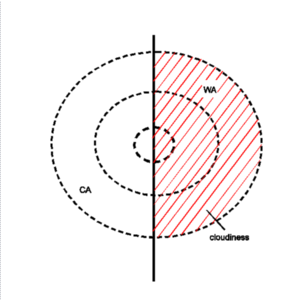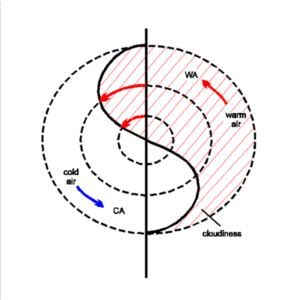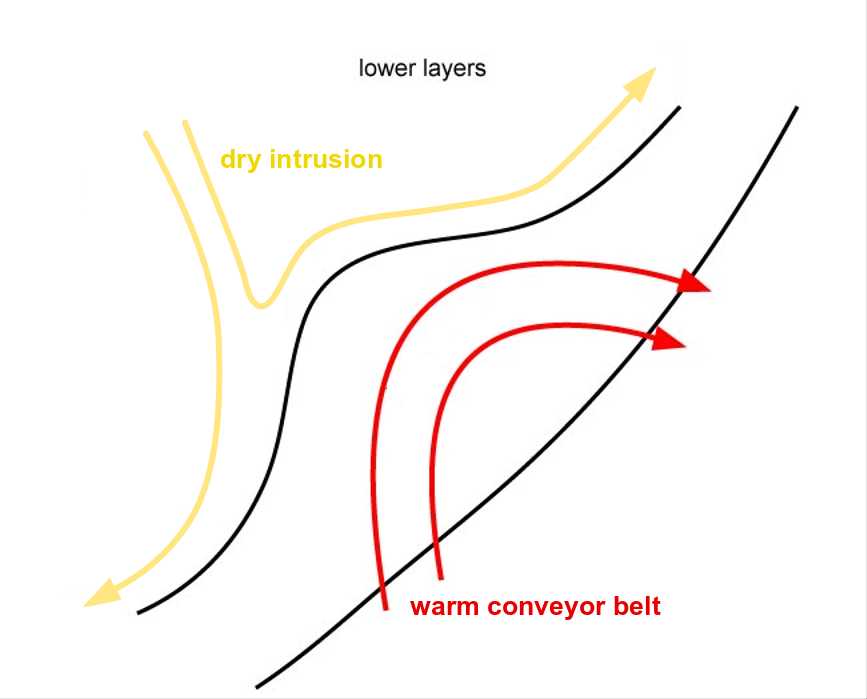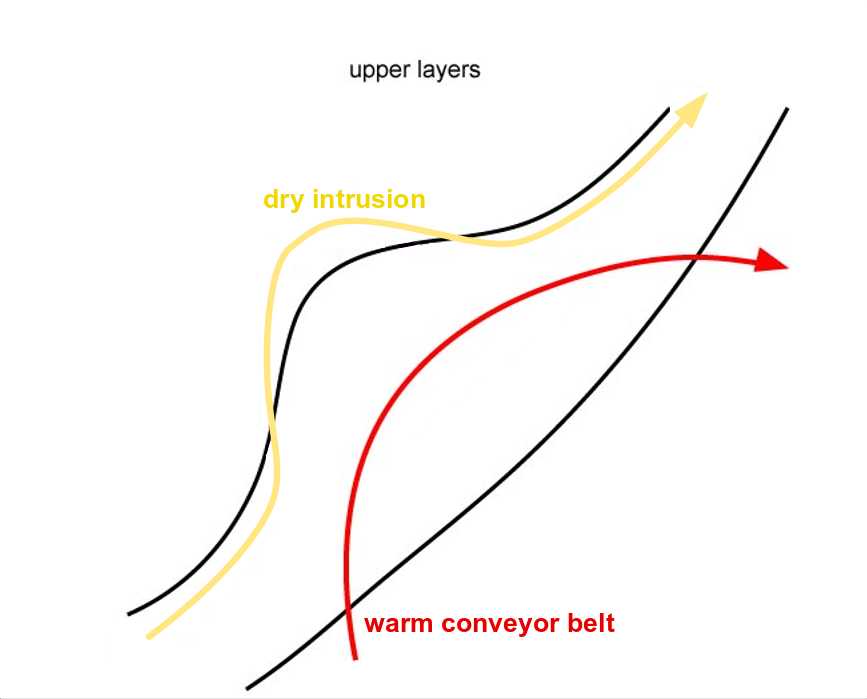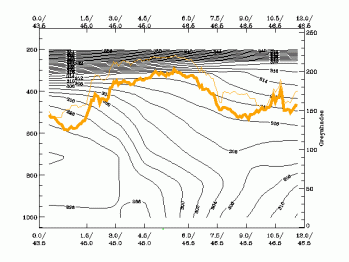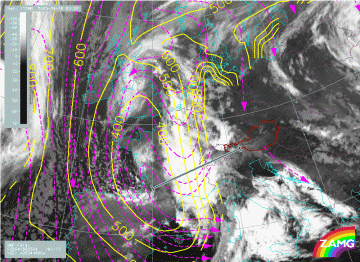Meteorological Physical Background
A Wave development can be treated as a substructure in a Cold Front and indicates the initial stage of cyclogenesis. There are several conceptual models describing Wave development:
- Wave development in a frontogenetic pattern
- Behaviour of stable and unstable Waves
- Cyclogenesis due to superposition of upper level vorticity maxima
- Downstream and upstream development of baroclinic waves
- Orographic cyclogenesis
According to well-known polar front theory a low pressure area in the lower levels of the troposphere can develop if a small-scale disturbance is superimposed on the synoptic-scale air stream (see Key parameters ). This small-scale disturbance is caused by a transverse circulation within the baroclinic zone of the Cold Front. The transverse circulation is released by frontogenesis in the horizontal wind field that causes a fall in pressure, convergence and the production of cyclonic vorticity in the lower levels of the troposphere at the warm edge of the baroclinic zone. The consequence of this disturbance is that cold air moves south-eastward and warm air moves north-westward; this circulation is superimposed on the eastward-moving front. During this circulation a strengthening of the low pressure area occurs (as long as the frontogenesis continues) and further development of a new cyclone can be observed.
Looking only at the kinematic processes a very simple description of the development of the S-shape cloudiness as well as the typical distribution of the temperature advection field can be given. The cyclonic vorticity deforms the cloud band edge and transports cold and warm air, leading to typical positions of WA and CA maxima(see Key parameters ). The WA maximum as well as PVA within the cloud bulge, indicating the deepening of the low, contributes to the increase of cloudiness in the Wave area.
Conveyor belt theory has proved to be a valuable tool for providing additional insight into the development and behaviour of fronts. There are only very few investigations concerning Wave areas and the following summary is only based on about four cases. Therefore only the main common features are mentioned. While in the case of a frontal cloud band without a Wave relative streams are more or less oriented parallel to the cloud band (see Cold Front ), in the case of the cloud bulge of a Wave a small scaled substructure within the stream lines can be observed:
- a strongly ascending Warm Conveyor Belt accompanies the area of the cloud bulge;
- the dry intrusion approaches the warm conveyor belt, forming a limiting stream line between both streams very close to the cloud edge;
- the higher the isentropic level the more this stream overruns the cloud bulge - this part is less bright in the WV image and is sometimes accompanied by cloud fibres in the IR image which are at the rear of the cloud bulge - this effect appears only in a very small region and is not yet well understood;
- in the lower isentropic layers relative stream lines immediately south of the Wave form a saddle point - this is a consequence of the cyclonic circulation in the Wave area in the lower layers.
Wave development as described in this chapter is one type accompanying the initial stages of cyclogenesis. Some other types and their conceptual models can be found in this manual within the chapters:
- Rapid Cyclogenesis (see Rapid Cyclogenesis )
- Instant Occlusion (see Instant Occlusion )
|
16 April 2005/00.00 UTC - Vertical cross section; black: isentropes (ThetaE), orange thin: IR pixel values, orange thick: WV pixel values
|
16 April 2005/00.00 UTC - Meteosat IR image; magenta: relative streams 304K - system velocity: 181° 13 m/s1, yellow: isobars 304K, position of vertical cross section indicated
|
As can be seen in the vertical cross section the isentropic surface of 304K is a relatively low surface. Relative streams show a Warm Conveyor Belt within the Wave bulge, which in this case seems to be shifted a bit too far to the north. It rises from about 800 hPa up to 500 hPa and the limiting stream line between this stream and the one from behind the cloud band coincides relatively well with the cloud edge.
